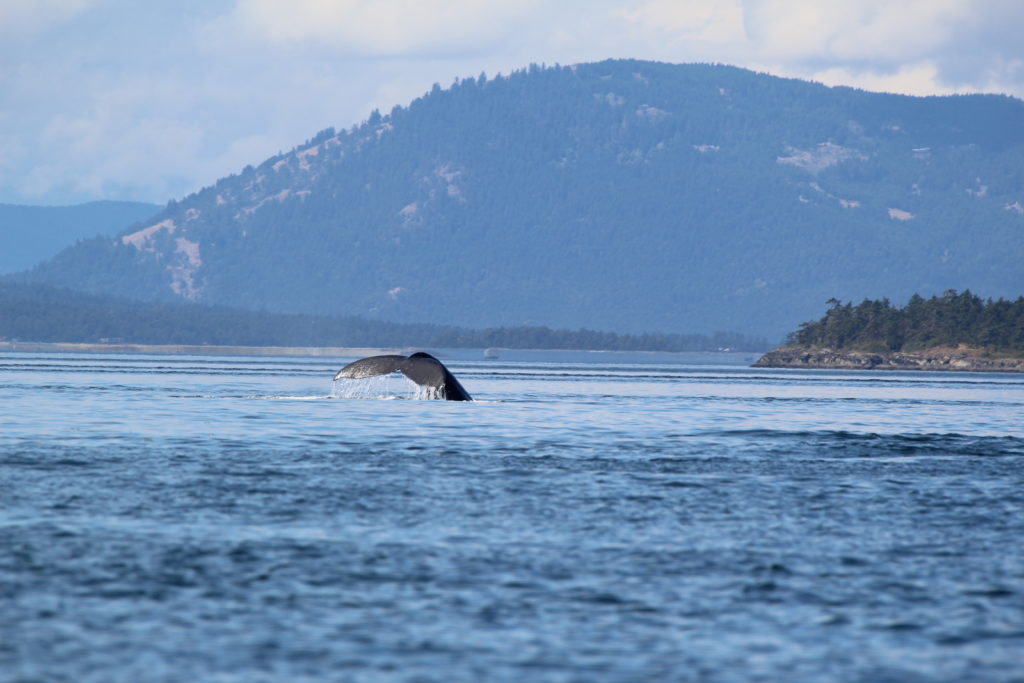
A humpback dives into the Salish Sea (in Boundary Pass) where vocalizations have been heard in recent falls and winters.
Version 1 created by Emily Vierling, 2022:
Humpback whales (Megaptera novaeangliae) are some of the most vocal marine mammals living in our oceans. They produce a wide range of vocalizations and are incredibly famous for their well-studied songs performed by male humpbacks on low-latitude breeding grounds. Songs are distinct within each population, but evolve year-to-year and can even be transmitted between populations!
Throughout the mid-19th and most of the 20th century, industrial whaling on the Pacific Northwest coast decimated humpback populations, leaving many wondering if they would ever return to the area. Humpback whales are now making a comeback in record numbers, giving hope for population recovery in the Salish Sea. With them, they bring the unique opportunity to study the vocalizations of their rebounding populations from the beginning, giving us a special glance into understanding their song and social cultures. As a pre-migration habitat with an abundance of feeding grounds, the Salish Sea may not seem like it would host a great deal of humpback vocalizations, but that’s where you’re wrong! Over the past decade, humpback whales have been increasingly detected on Orcasound’s hydrophone network and as the population grows, the number of acoustic bouts do too!
This project was started with the goal of providing the Orcasound and OrcaLab communities with a publicly-accessible catalogue of the most common vocalization types they will hear while listening to a bout through our live hydrophones. A “humpback bout” can last anywhere from a few minutes to a few hours and can host a variety of odd, but beautiful sounding vocalizations. In a few cases, you may even hear a song — a structured, complex sequence of sounds that is longer in duration and includes repeated, consistent “themes.” More than likely, though, you will hear what we refer to as humpback “calls” (aka “non-song vocalizations”) which are short and may occur in less-structured and less-repeated sequences (i.e. in “patterned, non-stereotyped bout sequences or entirely in isolation” per Fournet et al., 2015).
This catalogue was inspired by Helena and Paul at OrcaLab, and developed subsequently with open Orcasound recordings from the 2020 and 2021 seasons. Emily isolated the 12 most common vocalization types heard in our study areas to provide you with a simple guide to analyzing and classifying humpback vocalizations as you hear them. The 12 vocalization types are: whup, grunt, ascending moan, descending moan, moan, upsweep, trumpet, growl, creak, buzz, shriek, and chirp. This gives you the opportunity to annotate the live audio streams using these call types and help Orcasound map the evolution of our marine soundscape in the Salish Sea!
Learn more, access the raw audio and spectograms, and help us improve the open source code for this catalogue in Orcasound’s signals-humpback repository on Github. You can hear Emily present her work to the HALLO group (YouTube) during one of their open calls and read about her work in the Salish Sea Currents, too!
Whup
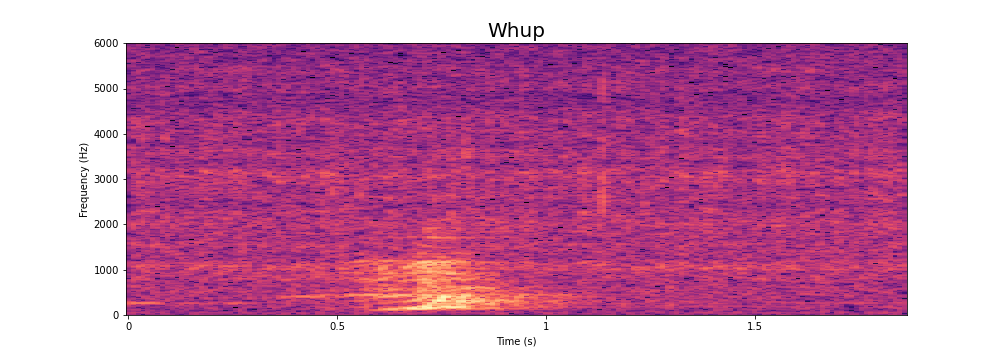
Grunt
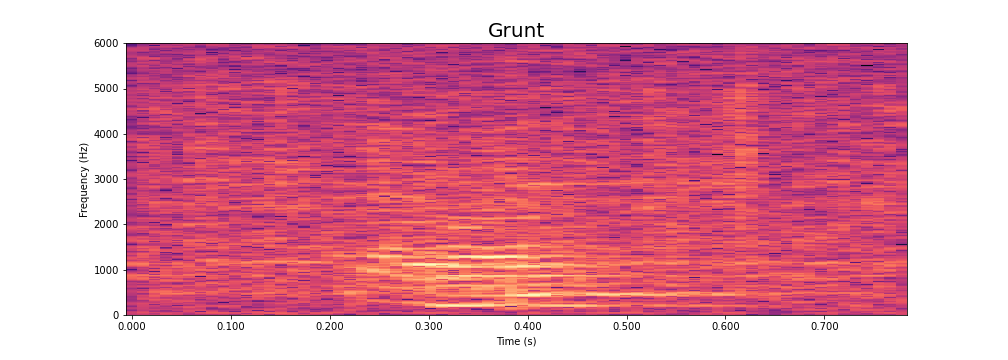
Ascending Moan
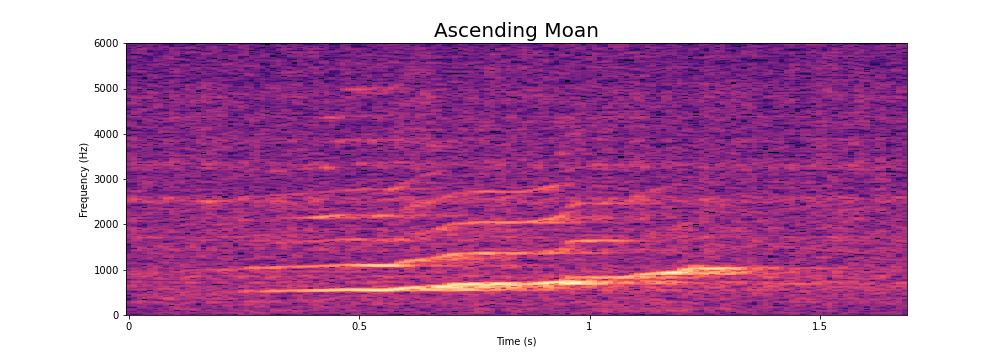
Descending Moan
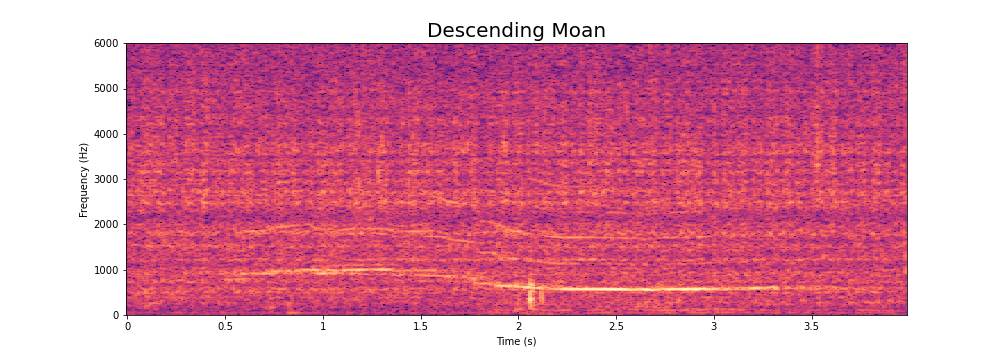
Moan
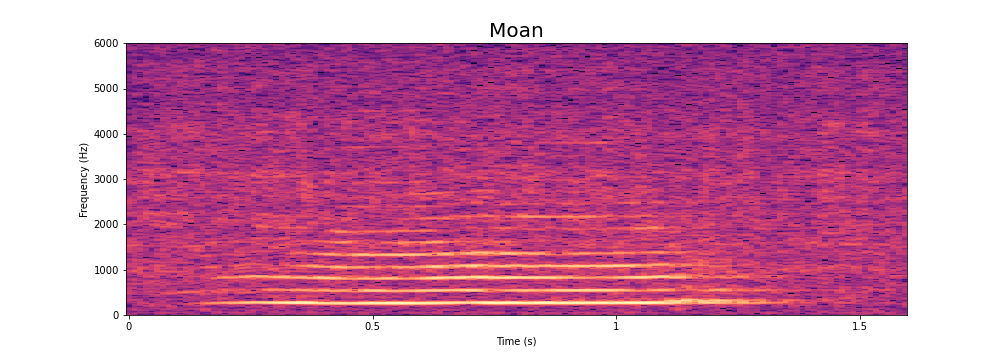
Upsweep
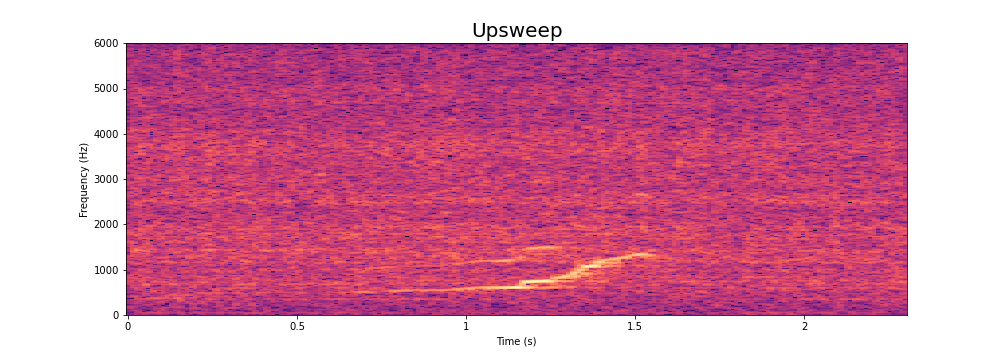
Trumpet
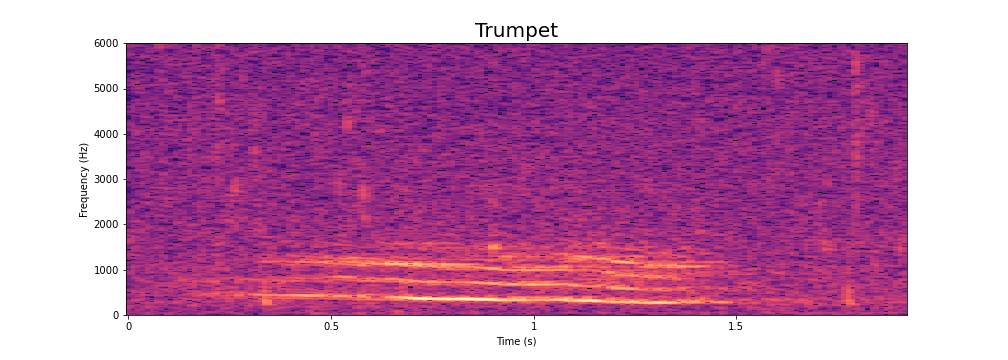
Growl
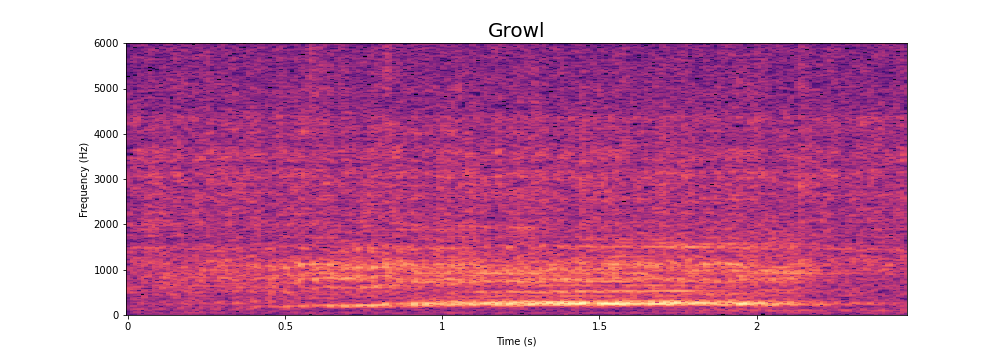
Creak
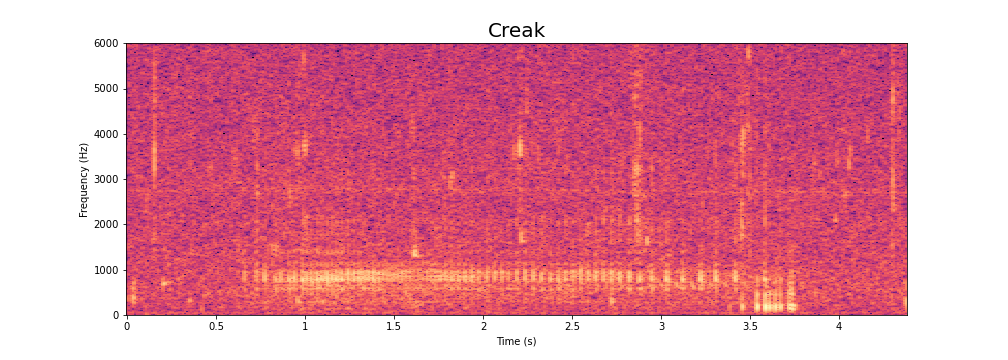
Buzz
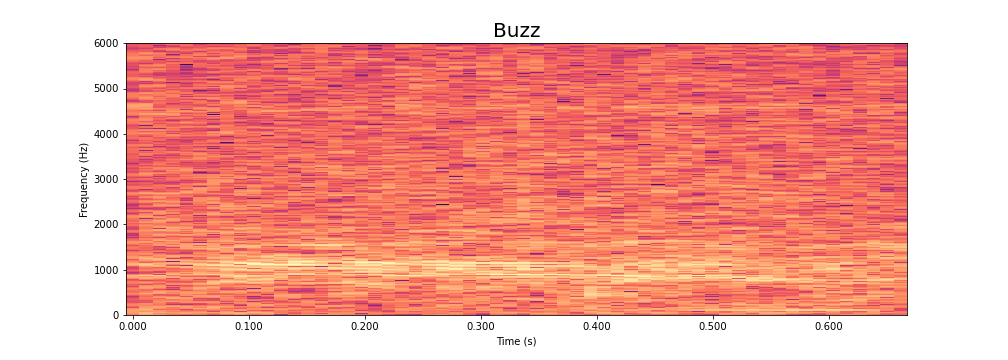
Shriek
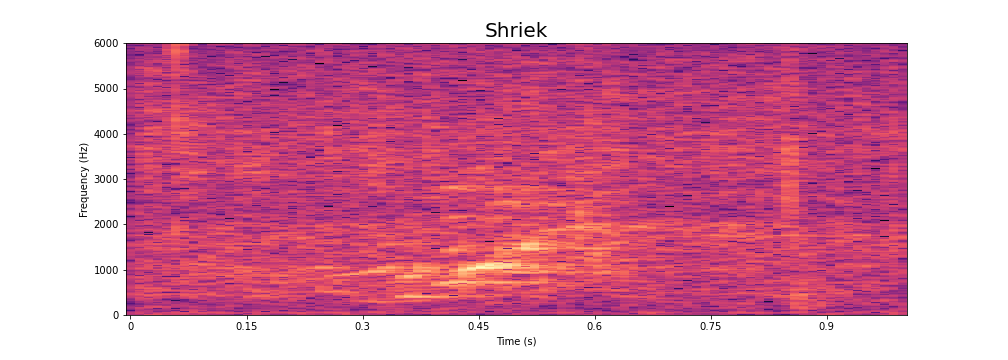
Chirp
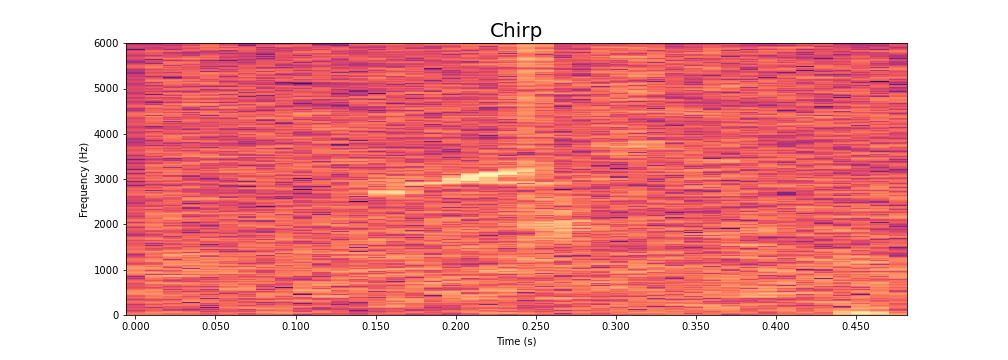
The most awesome part of living here. I live in Greenbank and the whales come to my front yard (sand shelf) and dig huge holes for ghost shrimp.
Really great learning tool! Thanks for sharing!
Sure, Lucy! Thank you all up in Canada for sharing your bioacoustic insights, too. We love:
this is a great tool for research.
is it possible to get more samples to compare with caribbean recordings?
best regards
Fredy Orjuela
marine biologist
Sure, Fredy. Keep an eye on this Haro Humpback wiki page for further details as Emily publishes her work.
You can also find some longer clips of humpback bouts in these blog posts, Fredy: https://www.orcasound.net/category/humpbacks/
Hello scott
I have a bunch of recordings from a project of monitoring . there is a sound that is not antropogenic, I think is a marine mammal but I cant tell which one, I think is a dolphin but not sure what species may be.
Hey again, Fredy — you could try browsing through this library for a match — https://whoicf2.whoi.edu/science/B/whalesounds/index.cfm